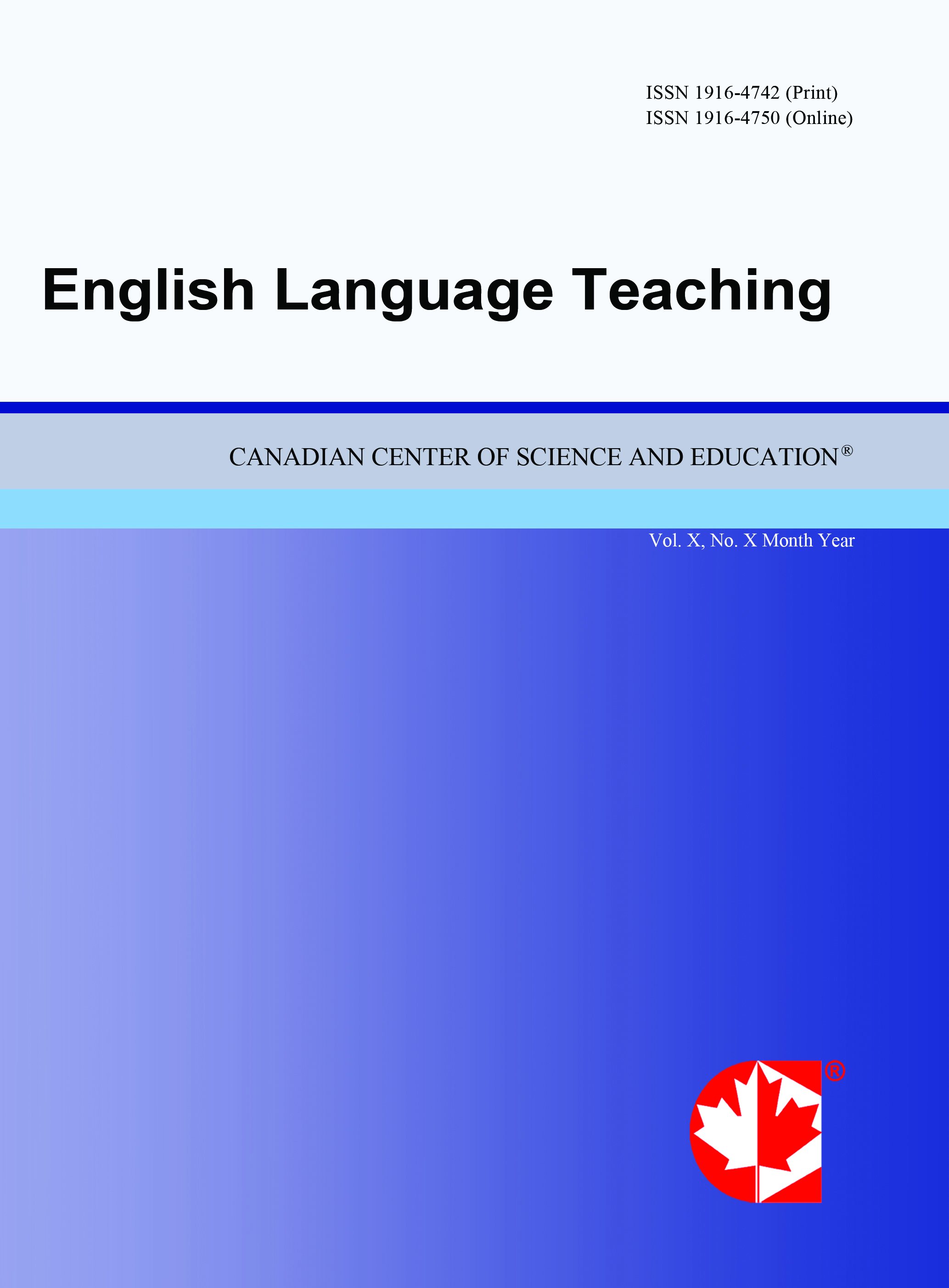Contrastive Study between Pronunciation Chinese L1 and English L2 from the Perspective of Interference Based on Observations in Genuine Teaching Contexts
- Feng Li
Abstract
Much research has been conducted on factors that impact on second language (L2) speech production in light of the age of L2 acquisition, the length of residence in the L2 environment, motivation, the amount of first language (L1) usage, etc. Very little of this research has taken the perspective of interference between L1 and L2, especially with respect to Asian languages. This article tries to locate the differences in pronunciation between Chinese L1 and English L2 by contrastive analysis through observing genuine teaching and learning contexts, in hope of facilitating English pronunciation pedagogy in China.
- Full Text:
 PDF
PDF
- DOI:10.5539/elt.v9n10p90
Journal Metrics
1. Citations (February 2025): 97751
2. h-index (February 2025): 132
3. i10-index (February 2025): 1695
For details about the Journal Metrics, please visit the Google Scholar website.
Index
- Academic Journals Database
- CNKI Scholar
- Educational Research Abstracts
- Elektronische Zeitschriftenbibliothek (EZB)
- EuroPub Database
- Excellence in Research for Australia (ERA)
- GETIT@YALE (Yale University Library)
- Harvard Library E-Journals
- IBZ Online
- INDEX ISLAMICUS
- JournalSeek
- JournalTOCs
- LearnTechLib
- Linguistics Abstracts Online
- LOCKSS
- MIAR
- MLA International Bibliography
- NewJour
- Open J-Gate
- PKP Open Archives Harvester
- Publons
- ResearchGate
- ROAD
- SHERPA/RoMEO
- Standard Periodical Directory
- Technische Informationsbibliothek (TIB)
- The Keepers Registry
- Ulrich's
- Universe Digital Library
Contact
- Gavin YuEditorial Assistant
- elt@ccsenet.org
